Lake trout, the jewel of any angler’s catch, offers a fascinating narrative, especially in Tennessee. Originally native to colder northern waters, these sizable fish have established a significant presence in Tennessee. Their fierce spirit when on a fishing line has won the admiration of fishing enthusiasts across the state and beyond.
In this article, we discover the largest trout ever caught in Tennessee. We also dive deep into the lake trout’s world in Tennessee, exploring their history in the state, preferred locations, diet, and predators, and even providing useful fishing tips.
So, let’s embark on this enlightening journey to better understand, appreciate, and protect the lake trout of Tennessee.
What Is the Largest Lake Trout Ever Caught in Tennessee?
According to the Tennessee Wildlife Resources Agency, the largest lake trout ever caught in Tennessee weighed 22 lbs. 2 oz. Jack Forbes caught the trout at Watauga Reservoir on July 3, 2008. At over 22 pounds, Forbes’ catch was as big as a Cocker Spaniel.
An average adult female American Cocker Spaniel should typically weigh between 18 and 22 lbs., while a male typically weighs around 25 pounds.
The Largest Lake Trout Ever Caught Worldwide
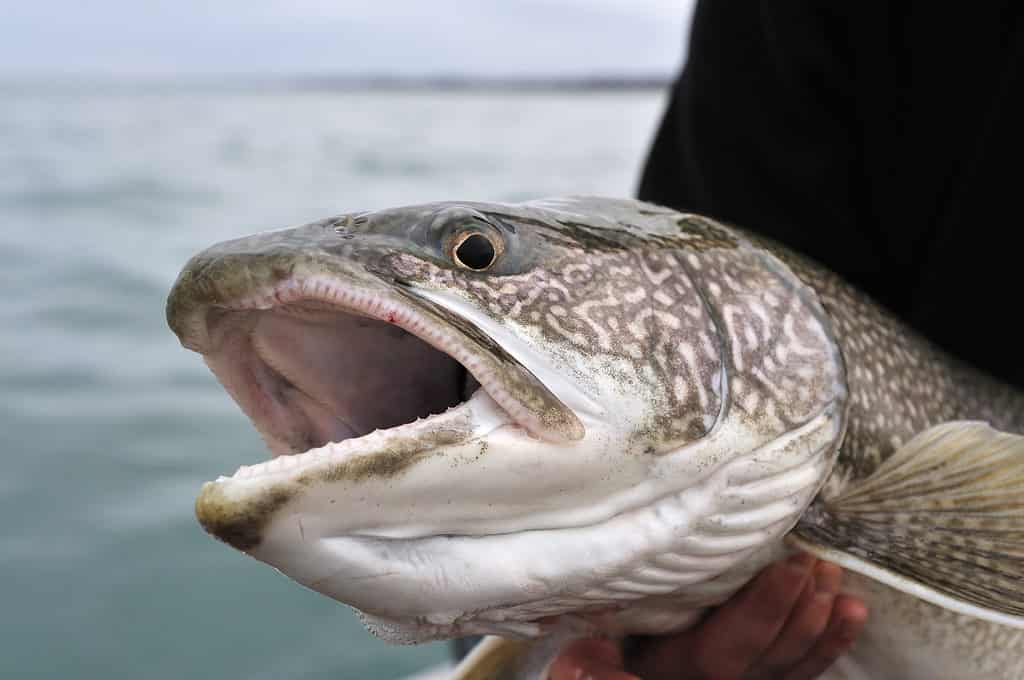
Lake trout in their natural wild habitat live 10-20 years.
©iStock.com/glxedwards
According to the International Game Fish Association (IGFA), the largest Lake Trout ever caught weighed 72 lbs. Angler Lloyd Bull, who regularly visited Great Bear Lake in the Arctic region, famous for its massive lakers, caught this colossal lake trout in 1995. While detailed information about this official world record catch remains elusive, it appears that the experienced and passionate angler caught it by trolling.
Reproduction and Behavior of Lake Trout
Lake trout, renowned for their size and the challenge they pose to anglers, also exhibit fascinating behaviors and reproductive strategies. Let’s delve into the intricacies of their life cycle.
Lake Trout Reproduction Cycle
Lake trout show an interesting pattern in their reproductive behavior. They spawn in the fall, often in October or November when water temperatures drop below 50 degrees Fahrenheit. Unlike many other trout species, they prefer rocky substrates in deep water for their spawning beds. Mature females lay thousands of eggs, which attach to the lake bottom’s substrate, waiting for fertilization from males.
Mating Behavior
Lake trout demonstrate a unique mating behavior. Males arrive at the spawning grounds first, preparing the territory for the females’ arrival. They engage in competitive displays, trying to prove their dominance. When the females arrive, they pair up with males and release their eggs, which the males then fertilize. This process can last several days, with males often mating with multiple females.
General Behavior
Lake trout, which are cold-water fish, tend to dwell in the deepest, coldest parts of a lake during the warm summer months. They can be found at depths of 60 feet or more during this time. This behavior changes during spring and fall when lake trout swim in shallower waters to feed and spawn. They are voracious eaters and opportunistic feeders, consuming a wide variety of prey.
Seasonal Behavior
Seasonal changes have a significant influence on the behavior of lake trout. In summer, they stay in deeper water to escape the heat. As fall approaches and temperatures drop, they move towards shallow water for spawning. During winter, lake trout become less active due to the cold but still continue to feed. The onset of spring sees them becoming more active and moving to shallow waters to feed before retreating to the depths again in the heat of summer.
Where to Find Lake Trout in Tennessee
If you’re seeking lake trout in Tennessee, it’s crucial to know their preferred habitats. Fortunately, Tennessee boasts several locations where anglers can cast their lines with a good chance of reeling in a lake trout.
Norris Lake

Norris Lake is a reservoir that is located in Tennessee.
©Stephen P Robinson/Shutterstock.com
Norris Lake stands as a prime location for lake trout fishing. The Tennessee Valley Authority (TVA) manages this reservoir, which holds deep, cold waters ideal for lake trout. From its steep, rocky banks to its hidden depths, Norris Lake offers a prime lake trout habitat.
Watauga Lake

A cloudy and foggy day at the beautiful Watauga Lake in the Cherokee National Forest in northeastern Tennessee.
©iStock.com/Eifel Kreutz
Watauga Lake, nestled in the Appalachian Mountains, is another renowned spot. Its high elevation keeps the water cold year-round, making it a perfect home for lake trout. It’s a must-visit for any avid angler seeking a trophy lake trout in Tennessee.
South Holston Lake

There are several convenient spots along the shore where fishing can be enjoyed.
©Savanna Woods/Shutterstock.com
Another body of water, South Holston Lake, attracts lake trout anglers. Nestled near the Tennessee-Virginia border, this deep, cool lake provides ideal conditions for lake trout to thrive.
Diet of Lake Trout
A glimpse into the diet of lake trout helps us understand their role in the aquatic food web and their preferences when it comes to fishing bait. As opportunistic feeders, lake trout have a varied diet, but it mainly consists of smaller fish.
Variations in Diet
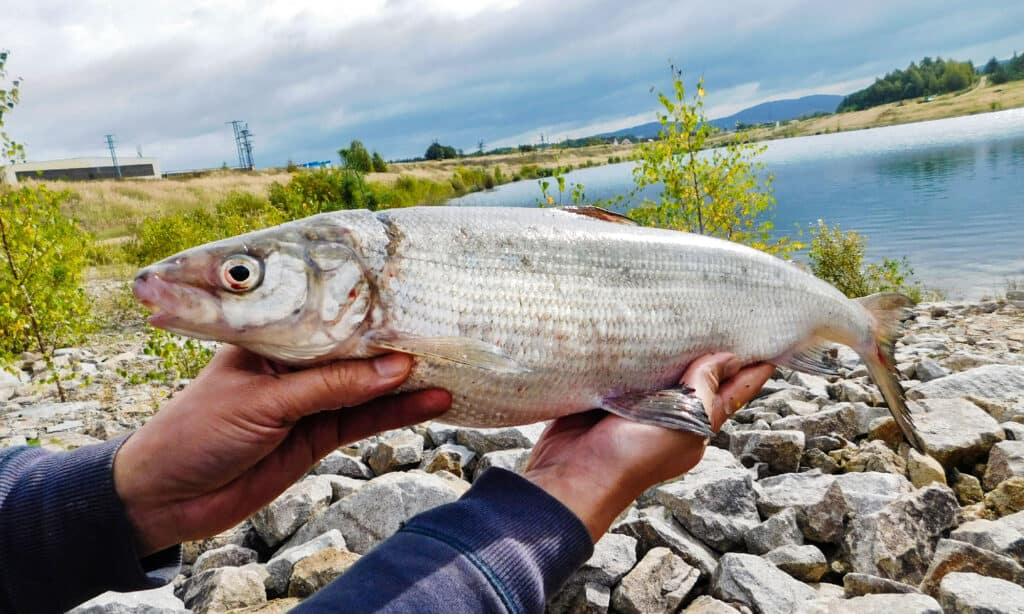
Large lake trout will feed on smaller cisco, shown above.
©Michaela Holubova/Shutterstock.com
In their juvenile stage, lake trout feed mostly on plankton before switching to a fish-dominated diet as they grow larger. In Tennessee waters, their diet consists largely of species like cisco, whitefish, and various types of baitfish. They are known to consume crustaceans and insects as well, depending on availability. Seasonal changes in prey populations can lead to variations in the diet, which is crucial information for anglers trying to mimic their natural prey.
Effects of Prey Availability
The availability of prey in different water bodies influences the growth and size of lake trout. In reservoirs where prey species are abundant, lake trout can reach impressive sizes. However, in environments where prey is limited, they may not grow as large or may take longer to reach maturity. This reliance on a sufficient prey base is an important factor when considering stocking efforts and the sustainability of lake trout populations.
The Connection to Fishing
Understanding the diet of lake trout is also crucial for successful fishing. Anglers can use this information to choose the most effective bait or lure that mimics the trout’s natural prey, increasing their chances of a successful catch.
Predators of Lake Trout
The dynamics of predator-prey relationships are fundamental in shaping the life of a lake trout in Tennessee. While they are apex predators in their environment, they aren’t without their threats.
Aquatic Predators
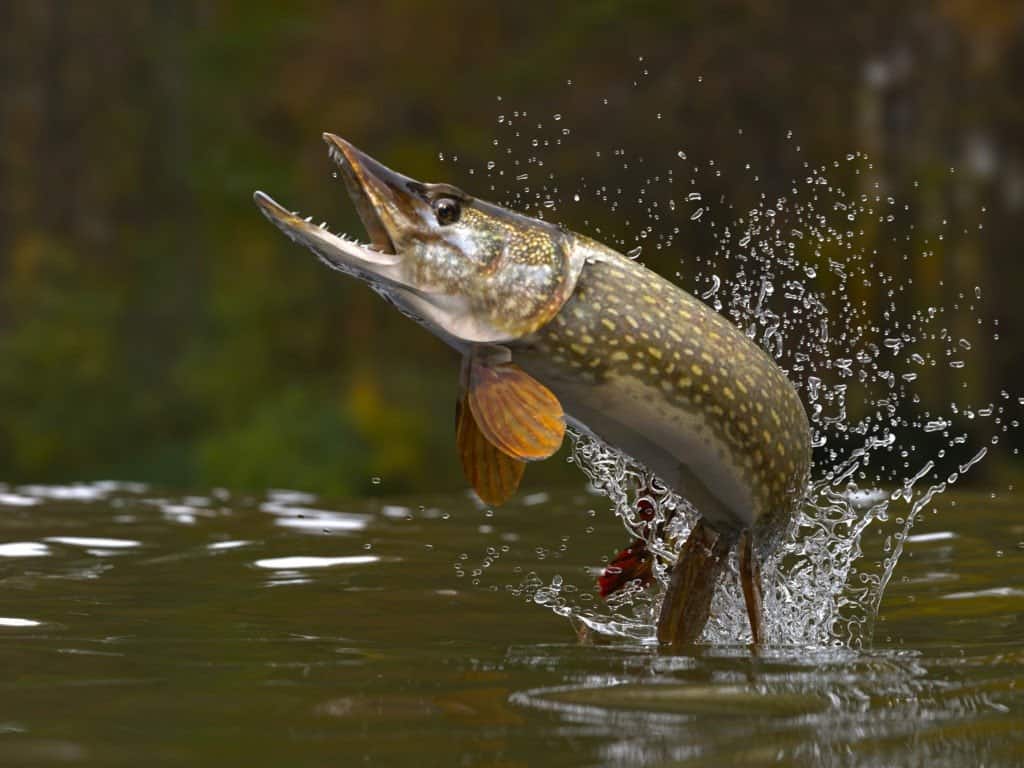
Northern pike are known to prey on juvenile lake trout.
©bekirevren/Shutterstock.com
In their early life stages, young lake trout are susceptible to predation by larger aquatic creatures. Northern pike, a species known for its aggressive predatory behavior, often preys on smaller fish, including juvenile lake trout. Larger, mature lake trout may also exhibit cannibalistic behavior, feeding on the smaller, younger trout when food sources are limited.
Avian Predators

Ospreys have excellent vision that can detect underwater objects from the air, and they catch fish by diving underwater, either foot first or by submerging their whole bodies.
©BlueBarronPhoto/Shutterstock.com
Beyond the water, avian predators pose a significant threat to lake trout. Birds such as ospreys and bald eagles have keen eyesight and strong talons, enabling them to swoop down and snatch unsuspecting trout. These airborne hunters particularly target shallow water areas where young lake trout tend to congregate.
Human Predation
Humans stand as the primary predators of lake trout, with anglers across Tennessee and beyond seeking them out for both sport and sustenance. Their popularity can lead to overfishing, which, without proper management, can severely deplete lake trout populations.
Impact of Predation on Behavior
Predation risks have a substantial impact on lake trout behavior. Often, this prompts lake trout to migrate deeper into the water column as they mature, where cooler temperatures and reduced light offer protection from predators. This depth preference also affects where and when anglers are most likely to successfully catch lake trout.
Regulatory Measures
Regulatory measures help manage human predation and ensure lake trout sustainability. The Tennessee Wildlife Resources Agency enforces measures like bag limits, minimum size limits, and specific seasons to help protect the lake trout population. These regulations require constant updating based on scientific research and population monitoring.
Tips for Fishing Lake Trout in Tennessee
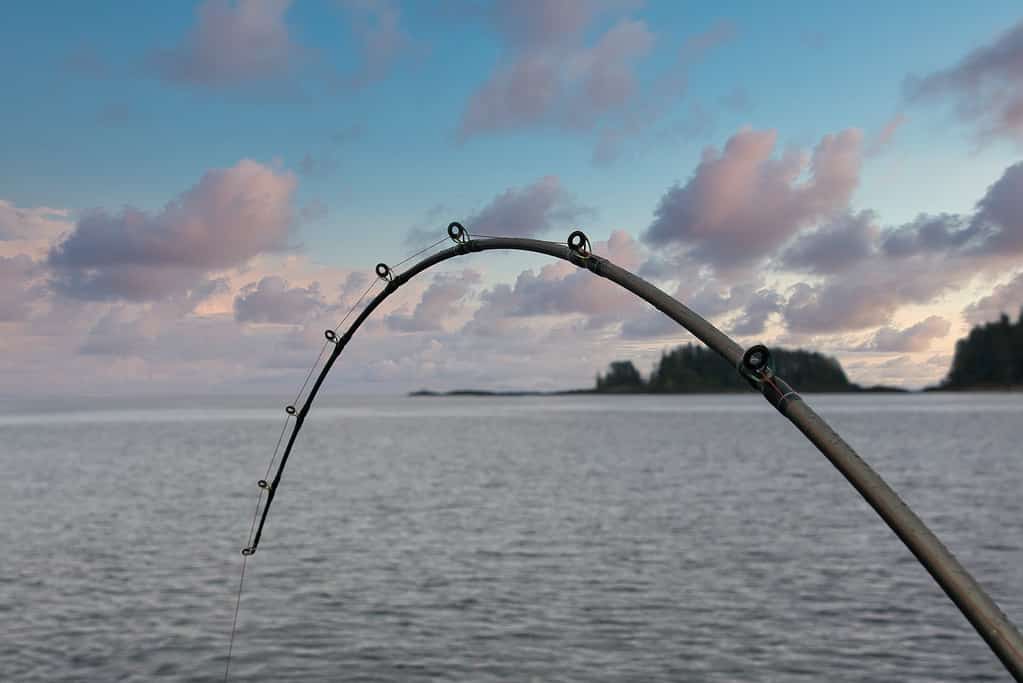
Fishing is a beloved sport for many Tennessee residents.
©Darryl Brooks/Shutterstock.com
Lake trout fishing in Tennessee can be an exhilarating experience. However, it requires a particular set of skills and knowledge. Let’s dive into some useful tips to help you land a successful catch.
Understand Lake Trout Behavior
Understanding lake trout behavior is fundamental. Lake trout are cold-water species, meaning they often dwell in deeper waters during warm months and rise to shallower waters in colder seasons. Keeping this in mind will help you find the right fishing spots at different times of the year.
Choose the Right Gear
Picking the right gear is crucial for lake trout fishing. Medium to heavy rods paired with a good quality line is ideal due to the large size and fighting spirit of these fish. Lake trout also have a keen sense of sight, so a clear or low-visibility fishing line is a wise choice.
Effective Bait and Lures

Choosing the right lures is just as important as the location.
©Mix Tape/Shutterstock.com
Lake trout primarily feed on smaller fish, so using lures that mimic this prey is effective. Consider spoons, spinners, or plugs that imitate forage fish. Live bait, such as minnows, can also work well. Remember to adjust your bait choice based on the trout’s seasonal diet changes.
Trolling Techniques
Trolling is a widely accepted method for catching lake trout. This involves trailing a baited line behind a slow-moving boat. Since lake trout inhabit deep waters, downriggers or weighted lines can help get your lure to the desired depth.
Adhering to Regulations
Remember to always follow local fishing regulations. These rules ensure sustainable fishing practices and help conserve lake trout populations. Before heading out, check the current bag and size limits, and make sure your fishing license is up to date.
The Importance of Conservation
The conservation of lake trout in Tennessee is a topic of critical importance. It not only ensures the species’ continued survival but also maintains the state’s ecological balance and fishing traditions.
Lake Trout’s Ecological Role
Lake trout play a significant role in Tennessee’s aquatic ecosystems. As top predators, they help maintain the balance of species populations in the waters they inhabit. Their presence is also indicative of the health of the water bodies, given their preference for cold, oxygen-rich environments.
Threats to Lake Trout
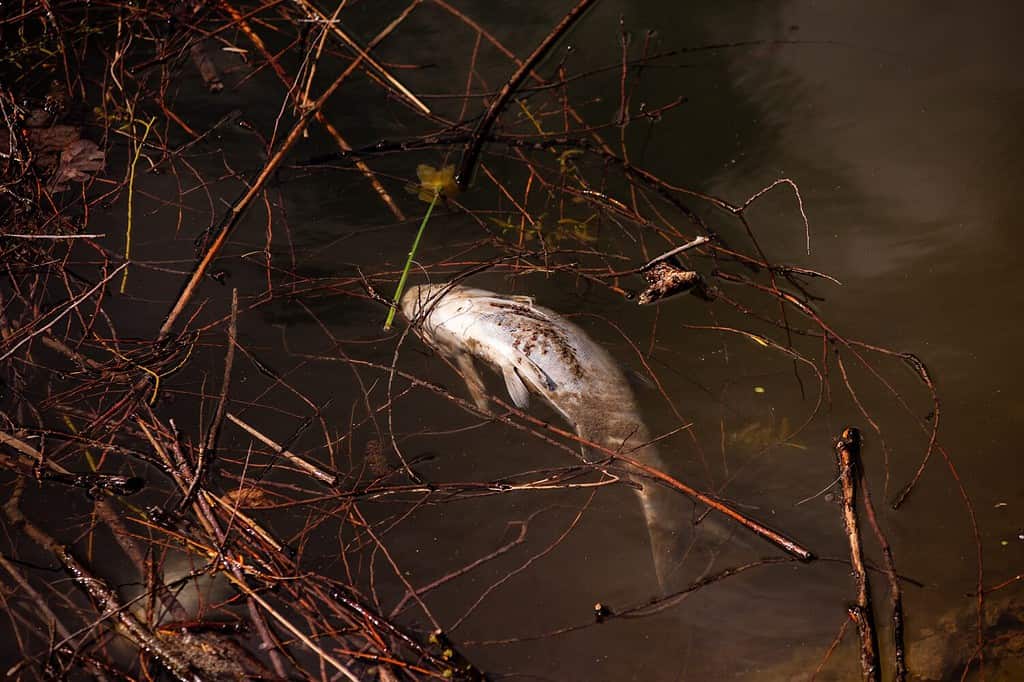
Pollution causes many changes in the ecosystem, which is dangerous to many fish species.
©Julia Pavaliuk/Shutterstock.com
Multiple threats to lake trout underline the need for their conservation. Overfishing, habitat loss due to environmental changes, and competition from invasive species can all impact lake trout populations. Pollution, which has a huge impact on wildlife worldwide, is another factor threatening the species. These threats highlight the importance of effective management strategies and adherence to fishing regulations.
Conservation Efforts
Conservation efforts for lake trout in Tennessee are multi-faceted. These include regular monitoring of population levels, restocking programs, and habitat conservation measures. Fishing regulations, such as bag limits and closed seasons, also play a key role in these efforts.
Sustainable Fishing Practices
Anglers have a significant role in lake trout conservation. Adopting sustainable fishing practices such as catch and release, respecting bag and size limits, and using gear that minimizes harm to the fish all contribute to the species’ longevity.
Key Takeaways
As we draw our exploration of the fascinating world of lake trout in Tennessee to a close, we’re left with a deep appreciation of their history, their habits, and the challenges they face. These fish, with their dynamic presence and significant contribution to the ecosystem, have immeasurable recreational and ecological value. The journey through their behaviors and preferences offers valuable insights for successful fishing experiences. At the same time, understanding the lake trout’s diet and natural predators highlights the intricate interdependence within their aquatic life network.
The photo featured at the top of this post is © iStock.com/LaSalle-Photo
Thank you for reading! Have some feedback for us? Contact the AZ Animals editorial team.







